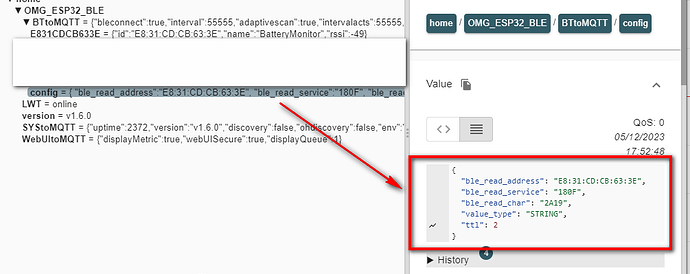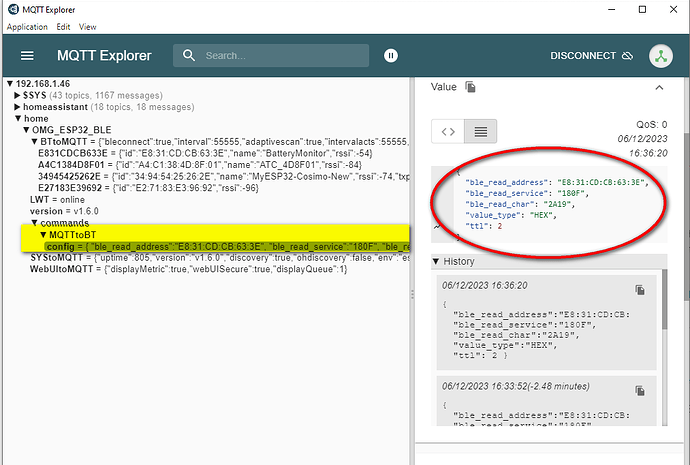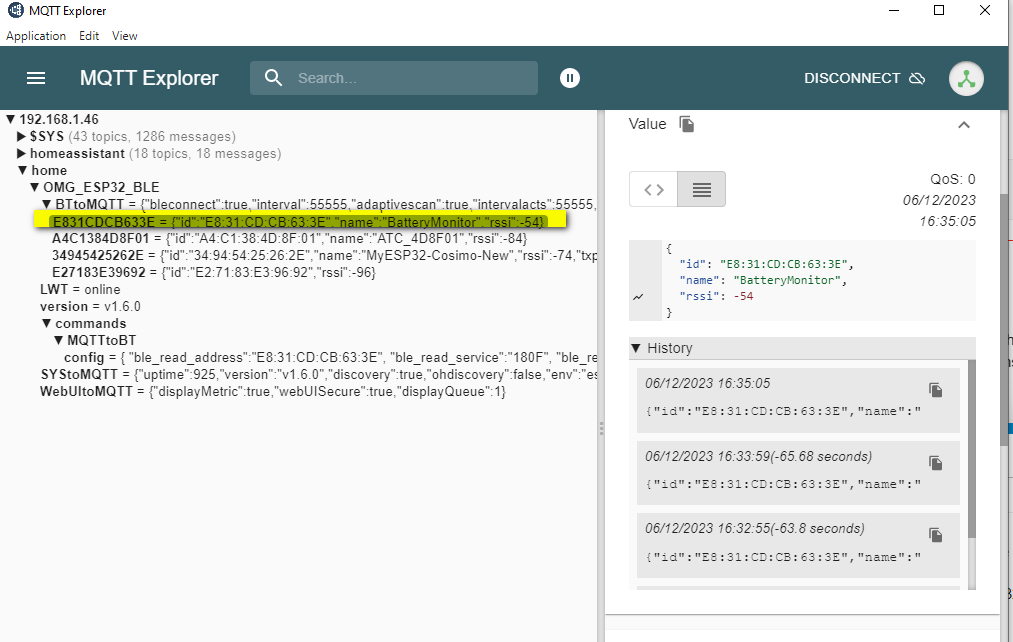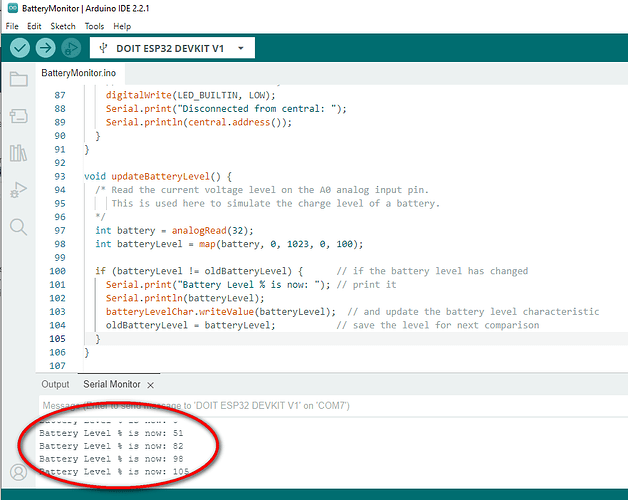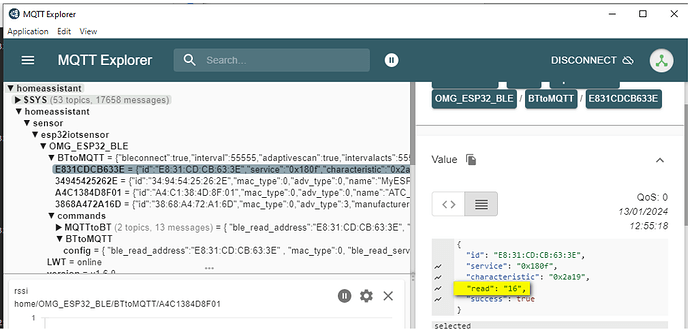Hi.
I’ve uploaded this simple code to ESP32 BLE peripheral (server) that reads values on pin32
/*
Battery Monitor
This example creates a Bluetooth® Low Energy peripheral with the standard battery service and
level characteristic. The A0 pin is used to calculate the battery level.
The circuit:
- Arduino MKR WiFi 1010, Arduino Uno WiFi Rev2 board, Arduino Nano 33 IoT,
Arduino Nano 33 BLE, or Arduino Nano 33 BLE Sense board.
You can use a generic Bluetooth® Low Energy central app, like LightBlue (iOS and Android) or
nRF Connect (Android), to interact with the services and characteristics
created in this sketch.
This example code is in the public domain.
*/
#include <ArduinoBLE.h>
// Bluetooth® Low Energy Battery Service
BLEService batteryService("180F");
// Bluetooth® Low Energy Battery Level Characteristic
BLEUnsignedCharCharacteristic batteryLevelChar("2A19", // standard 16-bit characteristic UUID
BLERead | BLENotify); // remote clients will be able to get notifications if this characteristic changes
int oldBatteryLevel = 0; // last battery level reading from analog input
long previousMillis = 0; // last time the battery level was checked, in ms
void setup() {
Serial.begin(9600); // initialize serial communication
while (!Serial);
pinMode(LED_BUILTIN, OUTPUT); // initialize the built-in LED pin to indicate when a central is connected
// begin initialization
if (!BLE.begin()) {
Serial.println("starting BLE failed!");
while (1);
}
/* Set a local name for the Bluetooth® Low Energy device
This name will appear in advertising packets
and can be used by remote devices to identify this Bluetooth® Low Energy device
The name can be changed but maybe be truncated based on space left in advertisement packet
*/
BLE.setLocalName("BatteryMonitor");
BLE.setAdvertisedService(batteryService); // add the service UUID
batteryService.addCharacteristic(batteryLevelChar); // add the battery level characteristic
BLE.addService(batteryService); // Add the battery service
batteryLevelChar.writeValue(oldBatteryLevel); // set initial value for this characteristic
/* Start advertising Bluetooth® Low Energy. It will start continuously transmitting Bluetooth® Low Energy
advertising packets and will be visible to remote Bluetooth® Low Energy central devices
until it receives a new connection */
// start advertising
BLE.advertise();
Serial.println("Bluetooth® device active, waiting for connections...");
}
void loop() {
// wait for a Bluetooth® Low Energy central
BLEDevice central = BLE.central();
// if a central is connected to the peripheral:
if (central) {
Serial.print("Connected to central: ");
// print the central's BT address:
Serial.println(central.address());
// turn on the LED to indicate the connection:
digitalWrite(LED_BUILTIN, HIGH);
// check the battery level every 200ms
// while the central is connected:
while (central.connected()) {
long currentMillis = millis();
// if 2000ms have passed, check the battery level:
if (currentMillis - previousMillis >= 2000) {
previousMillis = currentMillis;
updateBatteryLevel();
}
}
// when the central disconnects, turn off the LED:
digitalWrite(LED_BUILTIN, LOW);
Serial.print("Disconnected from central: ");
Serial.println(central.address());
}
}
void updateBatteryLevel() {
/* Read the current voltage level on the A0 analog input pin.
This is used here to simulate the charge level of a battery.
*/
int battery = analogRead(32);
int batteryLevel = map(battery, 0, 1023, 0, 100);
if (batteryLevel != oldBatteryLevel) { // if the battery level has changed
Serial.print("Battery Level % is now: "); // print it
Serial.println(batteryLevel);
batteryLevelChar.writeValue(batteryLevel); // and update the battery level characteristic
oldBatteryLevel = batteryLevel; // save the level for next comparison
}
}
At this point I’d like to read values on Mosquitto via OpenMQTT gateway using MQTT explorer.
For this purpose I’ve used read command like this:
mosquitto_pub -u test_user -P xxxxxx -t home/OMG_ESP32_BLE/BTtoMQTT/config -m '{
"ble_read_address":"E8:31:CD:CB:63:3E",
"ble_read_service":"180F",
"ble_read_char":"2A19",
"value_type":"STRING",
"ttl": 2 }'
Anyway on MQTT explorer I read this:
In other words I can’t see values.
I’ve tried even to connect the BLE device to nRF connect installed on iPhone but the result is the same: I can’t read the value.
Any idea?
Thanks in advance
